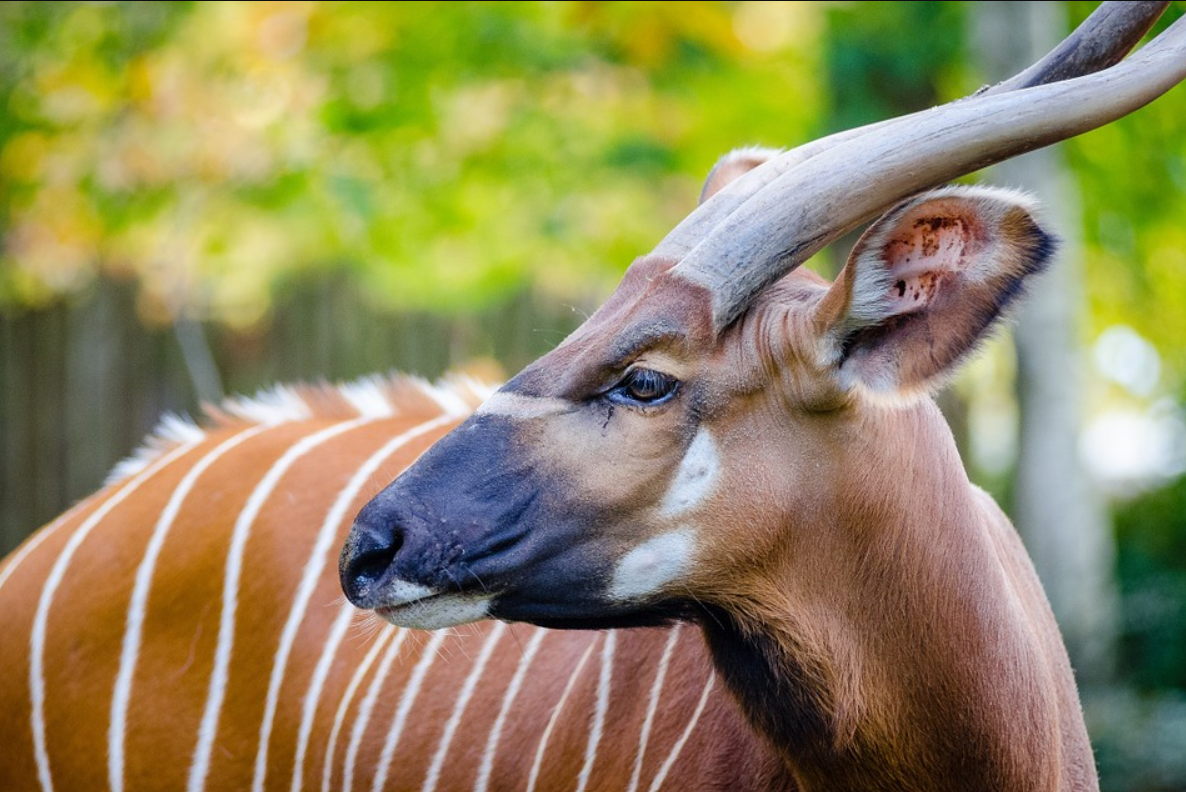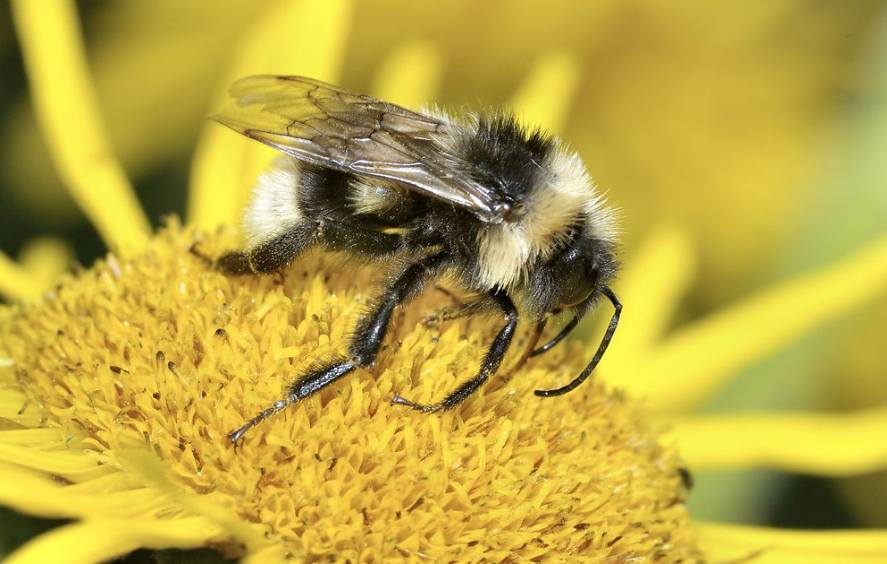
Habitat, Size, weight, and distinctive features of the bongo antelope
The Bongo, or Tragelaphus eurycerus, is a large and majestic antelope species that lives in the rainforests of Central Africa. It stands out because of its peculiar features, which include long, spiralling horns, a reddish-brown coat with white stripes, and a muscular build. Male bongos are among the largest antelopes found in woods, weighing up to 900 kg and standing around 1.5 metres tall at the shoulder.
Behaviour and Social Structure: Reproductive process, long horns and reddish-brown coat
Bongos are social animals that often reside in small herds consisting of a few females, a dominant male, and their offspring. They communicate with each other through a combination of body postures, vocalisations, and scent marking. The males display their power in spectacular ways by demarcating their territory and threatening rivals with their enormous horns. Despite their size and strength, bongos are known for being elusive creatures; when they sense danger, they often flee deeper into the jungle.
Diet and Feeding Habits: Preferred food sources and foraging Behaviour
The majority of these incredible creatures are herbivores, eating a variety of plants such as fruits, leaves, and grasses. They have a unique adaptation that allows them to utilize their long, flexible tongues to reach fruits and leaves from high trees as they search deep forests for sustenance. Because of their strong legs and streamlined bodies, bongos can navigate across rivers and swamps in search of food or to avoid predators, in addition to being proficient swimmers.
Importance of raising awareness about Bongo Antelope and their conservation
The bongo is an intriguing and secretive species of antelope that faces many difficulties in the wild. Worldwide, wildlife enthusiasts are captivated by the bongo’s distinct look and attitude. We can support conservation efforts to save this amazing species by being aware of and appreciating these facts about the bongo. Unfortunately, habitat destruction and poaching have led to a declining bongo population, making them a vulnerable species that needs protection.

Fascinating facts about Bongo Antelope
Originating from Africa’s woodlands, the bongo is an amazing species. The bongo is a huge antelope species that is greatly sought after by wildlife lovers due to its unusual look and behaviour.
Appearance of Bongo Antelope
The bongo is a huge, sturdy antelope that has a hump on its back and a reddish-brown coat with white stripes. Long, spiral-shaped horns that grow up to 40 inches in length are a feature shared by both men and females. They have big ears and a characteristic white mark on their faces that looks like a chevron.
Information about the natural habitat of Bongo Antelope
The deep rainforests and montane forests of Central and East Africa are the main habitats for bongos. They like places with plenty of vegetation and water supplies nearby. Because of their big ears, which aid in sound detection in the thick undergrowth, bongos are ideally suited to their natural environment.
Behaviour patterns of Bongo Antelope
Since bongos are mostly nocturnal creatures, the night is when they are most active. They hide and relax in the dense forest foliage throughout the day. They are said to be timid and secretive, which makes it challenging to locate them in the wild. Male and female bongos only come together during mating, making them solitary creatures as well.
Diet and Feeding Habits of Bongo Antelope
As an herbivore, bongos consume a wide range of plants, including leaves, grasses, fruits, and bark. Their unique digestive system enables them to effectively take nutrients from their diet. It’s well known that bongos are picky eaters, only consuming the plant portions that are highest in nutrients.
Threats to the Bongo Antelope: Human activities impacting Bongo populations
The International Union for Conservation of Nature has designated the bongo as an endangered species (IUCN). Their primary risks to survival include poaching for their flesh and horns, competition from domestic cattle, and habitat degradation from deforestation. To stop future population reduction and to preserve and restore the bongo’s native habitat, conservation activities are being carried out.
Reproductive and Mating process of Bongo Antelope
Bongos give birth to a single calf following a gestation period of around nine months. To keep the calf safe from predators, the mother conceals it under thick foliage. For a few weeks, the calf stays concealed until it has the strength to follow its mother. Male bongos mature sexually at three years of age, whereas females mature sexually at two years.

Unique behaviours, adaptations, or characteristics that make them stand out
Bongos have a number of adaptations that aid in their survival in their native forests. They blend in well with the forest’s shadows and dappled sunshine thanks to their reddish-brown coat with white stripes. Their spiral-shaped horns serve as a line of defence against any dangers, and their enormous ears aid in their ability to hear noises and predators.


